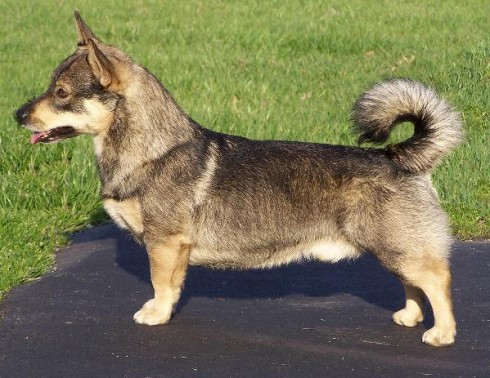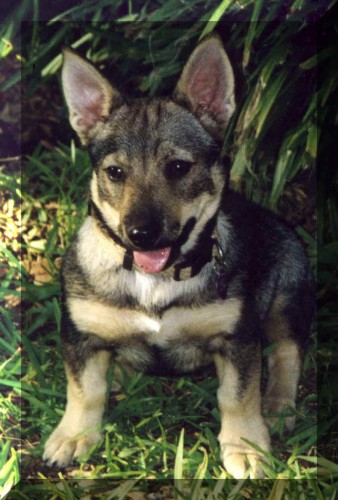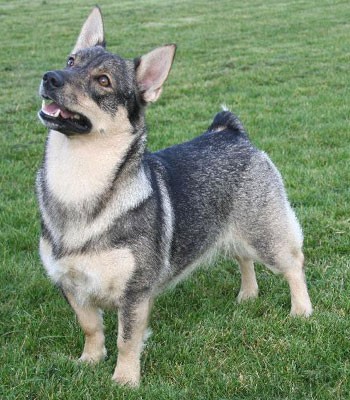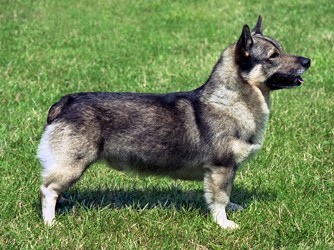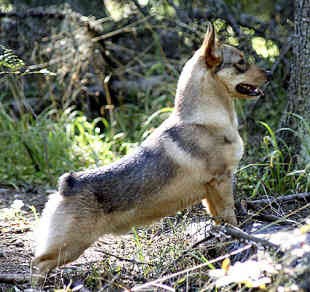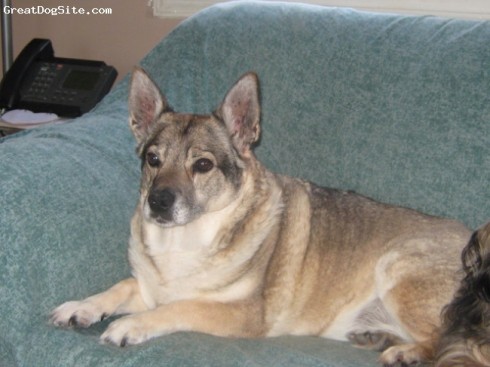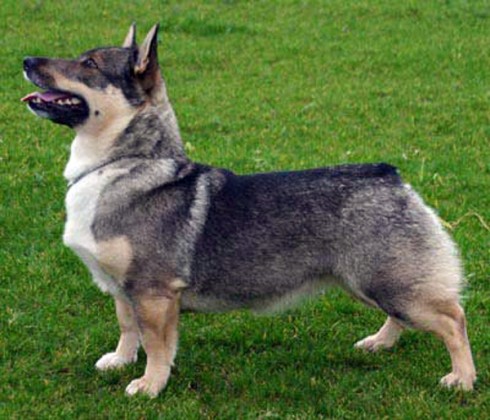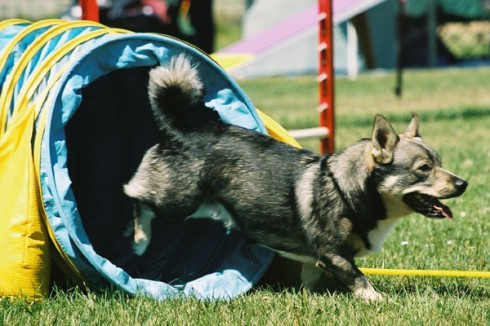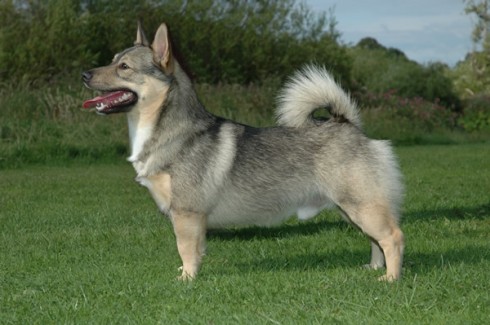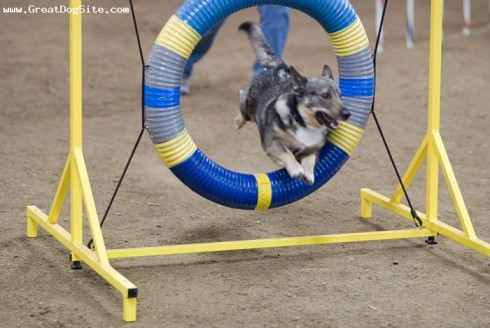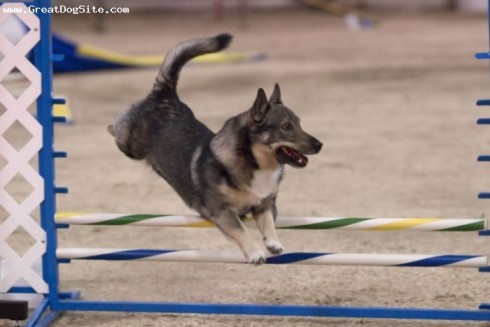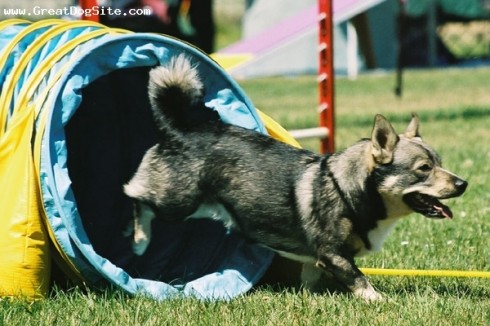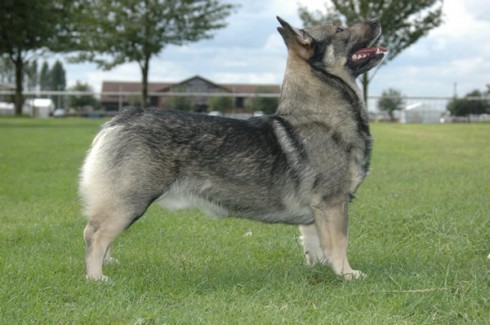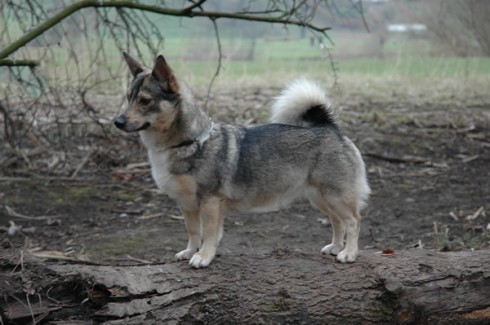Main Index
In Store
Our Web Store
Miniature Schnauzer Picture Gallery
Latest Dog Blogs
- What Are The Basic Commands To Train A Dog?
- PaySafe As The Most Popular Type Of Deposit
- Everything You Need To Know About Pet Sales
- Dogs Contribute To Our Physical And Mental Well Being
- How To Choose Where To Bet On Greyhounds In 2022
- Volunteer With Animals - How To Help Dogs Around The World
- Basic Understanding Of The House Edge
- Why You Should Get A Dog
- Top 20 Popular Dog Names Around The World
- Constipation in Dogs and How to Find Solutions
Swedish Vallhund
Swedish Vallhund Picture Gallery
Swedish Vallhund Clubs/Associations
The Full Swedish Vallhund Description
Indicative Breed Standard
General Appearance
Small, powerful, sturdily built working dog, with fairly long body. (Ratio of height at withers to length of body 2:3).
Characteristics
Appearance and expression denote a watchful, alert, energetic dog.
Temperament
Friendly, active, eager to please.
Head and Skull
Rather long and a clean-cut, blunt wedge with almost flat skull and well defined stop. Viewed from above, shows an even wedge shape from skull to tip of nose. Muzzle, viewed from side, looks rather square, slightly shorter than skull. Lower jaw strong. Although a dark mask is acceptable, a well defined mask is highly desirable with lighter hair around eyes, on muzzle and under the throat, giving a distinct contrast to the upper mask. Tightly closed lips. Nose black.
Eyes
Medium size, oval, very dark brown.
Ears
Medium size, pointed, pricked, leather hard from base to tip, but fine, smooth-haired and mobile.
Mouth
Scissor bite – jaws strong with a perfect, regular and complete scissor bite, i.e. upper teeth closely overlapping lower teeth and set square to the jaws.
Neck
Long, strongly muscled with good reach.
Forequarters
Shoulder blades long and well laid. Upper arm slightly shorter than shoulder blade and set at a distinct angle. Upper arm lies close to ribs, but is still very mobile. Forearm, when viewed from front, slightly bent, just enough to give free action to chest’s lower part; straight when viewed from side. Legs well boned.
Body
Back level, well muscled, with short, strong loin. Chest long with good depth. Well sprung ribs. Viewed from front, chest oval, from side elliptical. Reaching two-fifths of length of forearm. When viewed from side the lowest point of chest is immediately behind back part of foreleg. Sternum visible but not excessively pointed. Croup broad and slightly sloping. Belly slightly tucked up. Harness markings should be clearly defined.
Hindquarters
Well angulated, well bent stifles and low hocks, thighs strongly muscled. Legs well boned.
Feet
Medium, short, oval, pointing straight forward with strong pads. Well knuckled up.
Tail
Customarily docked or may be born tailless. Docked: Length not exceeding 10 cm (4ins) when adult. Tail carried horizontally or slightly downwards. May be raised at attention but never higher than the level of the back. Undocked: Carried horizontally or slightly downwards. May be raised at attention but never higher than level of back. In overall balance with the rest of the dog.
Gait/Movement
Free and active, elbows fitting closely to sides, forelegs moving well forward without too much lift, in unison with powerful thrusting hind action.
Coat
Medium length, harsh, close and tight topcoat, undercoat abundant, soft, woolly.
Colour
Steel grey, greyish brown, greyish yellow, reddish yellow, reddish brown with darker guard hairs on back , neck, and sides of body. Lighter hair same shade of colour as mentioned above is desirable on muzzle, throat, chest, belly, buttocks, feet and hocks. Instead of these lighter shades, white markings are acceptable, but never in excess of one-third of total colour.
Size
Height at withers: dogs: 33-35 cms (13-133/4 ins); bitches: 31-33 cms (12-13 ins). The relation between height at withers and length of body should be 2:3. Weight 11.5-16 kgs (25-35 lbs).
About Our Article Directory
- Article
- 27 November 2010
- 2 comments
Canis lupus familiaris
- Breed Article
- 29 May 2010
- No comments
Quick Search
Donate
Latest Dog Pods
- Tips on How to Stop Your Dog from Biting
- Beware - Not All Advertised Dog Rescues Really Are! How Can You Know The Truth?
- Helpful Tips For Dog Obedience Problems
- How to Keep Dogs From Eating Poop
- Dog Grooming Tips - A General Overview of the Very Basics of Dog Grooming
- Recognising Different Types of Dog Obedience Problems
- 5 Important Tips On Feeding A Puppy


